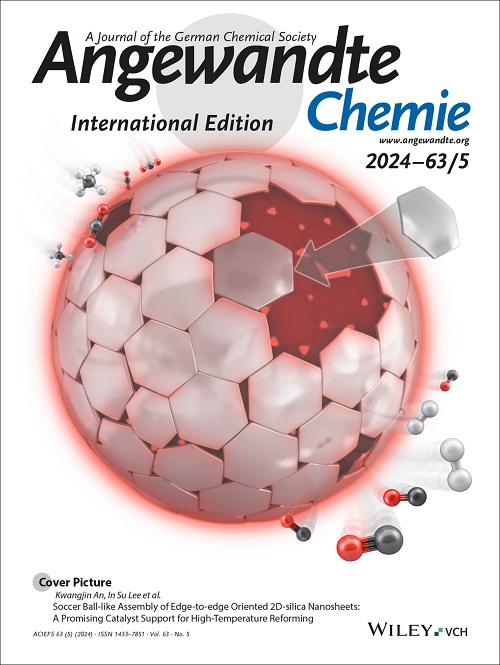Synergistic Regulation of Anode and Cathode Interphases via an Alum Electrolyte Additive for High-performance Aqueous Zinc–Vanadium Batteries
IF 16.1
1区 化学
Q1 CHEMISTRY, MULTIDISCIPLINARY
引用次数: 0
Abstract
A zinc (Zn) metal anode paired with a vanadium oxide (VOx) cathode is a promising system for aqueous Zn–ion batteries (AZIBs); however, side reactions proliferating on the Zn anode surface and the infinite dissolution of the VOx cathode destabilise the battery system. Here, we introduce a multi-functional additive into the ZnSO4 (ZS) electrolyte, KAl(SO4)2 (KASO), to synchronise the in-situ construction of the protective layer on the surface of the Zn anode and the VOx cathode. Theoretical calculations and synchrotron radiation have verified that the high-valence Al3+ plays multifunctional roles of competing with Zn2+ for solvation and forming a Zn–Al alloy layer with a homogeneous electric field to mitigate the side reactions and dendrite generation. The Al-containing cathode–electrolyte interface considerably alleviates the irreversible dissolution of the VOx cathode and the accumulation of byproducts. Consequently, the Zn || Zn cell with KASO exhibits an ultra-long cycle of 6000 h at 2 mA cm−2. Importantly, the VOx cathodes (VO2, V2O5 and NH4V4O10) in the ZS–KASO electrolyte showed excellent cycling stability, even at a low negative/positive (N/P) ratio of 2.83 and high mass loading (~16 mg cm-2). This study offers a practical reference for concurrently addressing challenges at the anode and cathode of AZIBs.通过明矾电解质添加剂对高性能锌-钒水溶液电池的阳极和阴极相间进行协同调节
锌(Zn)金属阳极与氧化钒(VOx)阴极配对是一种很有前途的水性锌离子电池(AZIBs)系统;然而,锌阳极表面的副反应扩散和氧化钒阴极的无限溶解破坏了电池系统的稳定性。在此,我们在 ZnSO4(ZS)电解液中引入了一种多功能添加剂 KAl(SO4)2(KASO),以同步在锌阳极和 VOx 阴极表面原位构建保护层。理论计算和同步辐射验证了高价Al3+的多功能作用:与Zn2+竞争溶解,并形成具有均匀电场的Zn-Al合金层,以减轻副反应和枝晶的生成。含 Al 的阴极-电解质界面大大缓解了 VOx 阴极的不可逆溶解和副产物的积累。因此,带有 KASO 的 Zn || Zn 电池在 2 mA cm-2 电流条件下可实现 6000 小时的超长循环。重要的是,ZS-KASO 电解液中的 VOx 阴极(VO2、V2O5 和 NH4V4O10)即使在低负极/正极(N/P)比(2.83)和高负载(约 16 毫克厘米-2)条件下,也表现出卓越的循环稳定性。这项研究为同时应对 AZIBs 阳极和阴极的挑战提供了实用的参考。
本文章由计算机程序翻译,如有差异,请以英文原文为准。
求助全文
约1分钟内获得全文
求助全文
来源期刊
CiteScore
26.60
自引率
6.60%
发文量
3549
审稿时长
1.5 months
期刊介绍:
Angewandte Chemie, a journal of the German Chemical Society (GDCh), maintains a leading position among scholarly journals in general chemistry with an impressive Impact Factor of 16.6 (2022 Journal Citation Reports, Clarivate, 2023). Published weekly in a reader-friendly format, it features new articles almost every day. Established in 1887, Angewandte Chemie is a prominent chemistry journal, offering a dynamic blend of Review-type articles, Highlights, Communications, and Research Articles on a weekly basis, making it unique in the field.

 求助内容:
求助内容: 应助结果提醒方式:
应助结果提醒方式:


